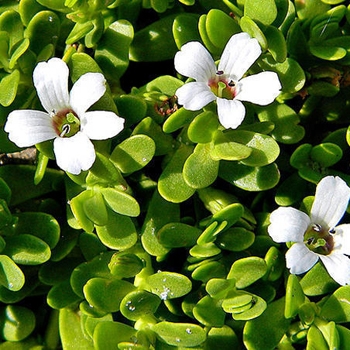Catuaba: lost in translation
J.B., who was already 60 and over, lived in a village in the far regions of Brazil. He was married to a strong woman and the two were known for their lively procreation. Every year a new healthy child would come on their way and every year the rumors in the village would grow regarding the vitality of the old man.
It seemed almost impossible that J.B. could still perform so vigorously given his old age. And yet, every year a new child would come to parade the old man’s vitality. One day, an old acquaintance of the two finally discovered the old man’s secret: at the end of their garden, he saw J.B. cutting some of the bark from a catuaba tree. It seemed the tree’s bark was giving J.B. all of the lost vigor from his youth! The news of the man’s secret soon had spread all over town and, wanting to gain back some vitality too, all other men turned up at their house. J.B. was avaricious, nevertheless, and in trying to protect his tree he made of his home a fortress of some sort.
The first time I heard about catuaba was probably around the time I started drinking back in Brazil. Catuaba, back there, is synonymous to a very cheap alcoholic beverage similar to wine but much sweeter. There, catuaba is basically the cheapskate drink for the young and the poor, something similar to what Jägermeister is here. Unlike Jägermeister, however, catuaba is very well known not only for its taste, but also for its unashamedly erotic logo, which is always reason for some jokes. Despite the apparent sexual symbolism of the drink’s brand, nevertheless, the aphrodisiac properties of catuabahad never passed through my mind. Looking back on it, though, the unawareness about the drink’s possible effect did not stop me from experiencing it.
First mentions
The first time the aphrodisiac potential of catuaba was mentioned within academia was in 1904, when Arthur José da Silva wrote his thesis (PT) on the chemistry and botany of the tree. Previously, catuaba had only been known informally by different communities, where accounts like the one above, which is also told in Arthur’s thesis, were not uncommon. With a history that is rather grounded on oral than written tradition, Arthur’s thesis on the topic can be considered a stepping stone towards the generation of knowledge about this tree within the academic environment. His work, nevertheless, was nothing but the beginning. After almost 120 years since his paper, there is still much more to learn about this tree.
The many names
For instance, up until nowadays it is still uncertain what exactly is the tree that people call ‘catuaba’. For Arthur, ‘catuaba’ meant Erythroxylum catuaba but ‘Erythroxylum catuaba’ nowadays means nothing but an old scientific name to which no real tree is attached. Rather, some say catuaba are the trees known as Erythroxylum vacciniifolium, which can be found in the Brazilian northeast and in the Atlantic Forest. Nevertheless, some communities_ who have been using ‘catuaba’ for a very long time_ might say that the tree that some call Erythroxylum vacciniifolium is not the catuaba tree. Instead, they say that the tree known as Trichilia catigua is the plant that people should look for. Other communities however, might disagree with both options and add yet another species to the confusion, called Anemopaegma arvense. Now, to Anemopaegma arvense add another 5 different genera, and then you will have all the 8 different genera that have been associated to ‘catuaba’ up until these days.
Catuaba as aphrodisiac
All of these plants seem to have been associated with the word ‘catuaba’ and all of them seem to have been given some sort of aphrodisiac property. Which tree was the ‘original’ catuaba might remain a mystery forever but what is known is that there are at least 8 different plants in Brazil that might have some sort of aphrodisiac property. Really, ‘catuaba’ seems to have become a word to describe any tree with such properties. One theory that tries to explain such widespread use of the term ‘catuaba’ says that the term was brought to the rest of Brazil by people coming from the Northeast, where the ‘original’ catuaba might have come from. During drought periods, people from the Northeast of Brazil would move to other parts of the country and, with them, bring the term ‘catuaba’.
Etymology of things
There are speculations that the term ‘catuaba’ originated from a Tupi-Guarani language (PT), where ‘caá’ means plant or leave, ‘tuã’ means stocky and ‘ibá’ means tree. Arthur José da Silva, author of the 1904 paper, on the other hand, suggested that the word could come from the tupinambá dialect, from which ‘catu’ means good and ‘apuaba’ means man, where ‘catua-puaba’ would mean good for men. This term would be slightly more suggestive in terms of the traditional use of the tree.
Finding the ‘one’
Truth is that, regardless of which tree exactly is meant by ‘catuaba’, all communities that make use of it have been doing so for a long time and seem to know which tree to go to and what to do with it. Shops selling ‘catuaba’ tend to have as a source people from these communities and as such, will obtain ‘catuaba’, meaning an aphrodisiac tree bark. A study published in 2004, run an analysis to identify the tree species of the barks being sold at shops and found that most of the shops were selling the Trichilia catigua tree.
The profile of the ‘one’
The Trichilia catigua belongs to the Meliaceae family. It is a tree that can grow to up to 10m high, with compound leaves of 5 to 7 leaflets and flowers of a whitish-yellow color. Its fruits consist of a reddish oblong capsule with long and stiff yellowish hairs. Each fruit has only one seed, which appears at any point between December and January and that stays on the tree for up to 6 months. Chemical analyses of the tree have come up with a series of constitutes, including condensed tannins, such as catechin, epicatechin, procyanidin, catiguanine A and B, and also some flavolignan, such as cinchonnains Ia, Ib, IIa, IIb and apcynin E.
The possible effects of catuaba
Studies regarding the aphrodisiac properties of this species have just started and, so far, there are no positive result confirming such properties. It has been found, however, that the plant can have relaxing and antidepressant like effects. It has also been shown that the plant can improve memory in mice and that it might have antinociceptive, anti-inflammatory, antiarrhythmic and antioxidant actions. Furthermore, there have been some studies showing the plant has antibacterial activity against some bacteria and antiviral activity against the poliovirus type 1, bovine herpes virus and poliovirus in HEp-2 cells. Studies are still on the go, nevertheless, and much more needs to be investigated. For an overview on Trichilia catigua, you can refer to this study.
The future of catuaba
Coming from a strong oral tradition, ‘catuaba’ has made a long way and, still in the midst of confusion and misplaced nomenclatures, might have an even longer way to go. From the little that is known, however, ‘catuaba’ seems to have a lot of potential and only the future will tell what more will come from it. Perhaps, someday, the ‘original’ catuaba will be found. Perhaps, finding the ‘original’ does not matter at all. As long as oral traditions are kept alive and as long as those with the knowledge within the community still live, ‘catuaba’, be what it may be, will carry on, together with the benefits that come with it.
Did you enjoy reading this article and do you like to write yourself? We are always looking for people who share our passion for natural products, who can also translate this into great texts. And we have an interesting reward for this. View all information for writers.
 Blog CBD
Does cannabis protect against the coronavirus? New research on cannabinoids including CBD
Are you a stoner and have you heard the good news that cannabis may help prevent getting sick from the coronavirus? Before we smoke a joint together a [..]
22-01-2020
6 minutes
Blog CBD
Does cannabis protect against the coronavirus? New research on cannabinoids including CBD
Are you a stoner and have you heard the good news that cannabis may help prevent getting sick from the coronavirus? Before we smoke a joint together a [..]
22-01-2020
6 minutes
 Blog Health
Help with Study Stress
As a student, you want everything to go smoothly, your grades to be great and your teachers (and especially you yourself) to be proud. But how do you [..]
27-11-2019
8 minutes
Blog Health
Help with Study Stress
As a student, you want everything to go smoothly, your grades to be great and your teachers (and especially you yourself) to be proud. But how do you [..]
27-11-2019
8 minutes
 Blog Magic Mushrooms
Mushroom Grow Kit Manual
Are you a beginner or do you have some experience growing mushrooms? There are ways you can get the biggest harvests. These tips will make growing Mag [..]
Blog Magic Mushrooms
Mushroom Grow Kit Manual
Are you a beginner or do you have some experience growing mushrooms? There are ways you can get the biggest harvests. These tips will make growing Mag [..]













 Nederlands
Nederlands Italiano
Italiano Deutsch
Deutsch Français
Français Português
Português Español
Español Polski
Polski